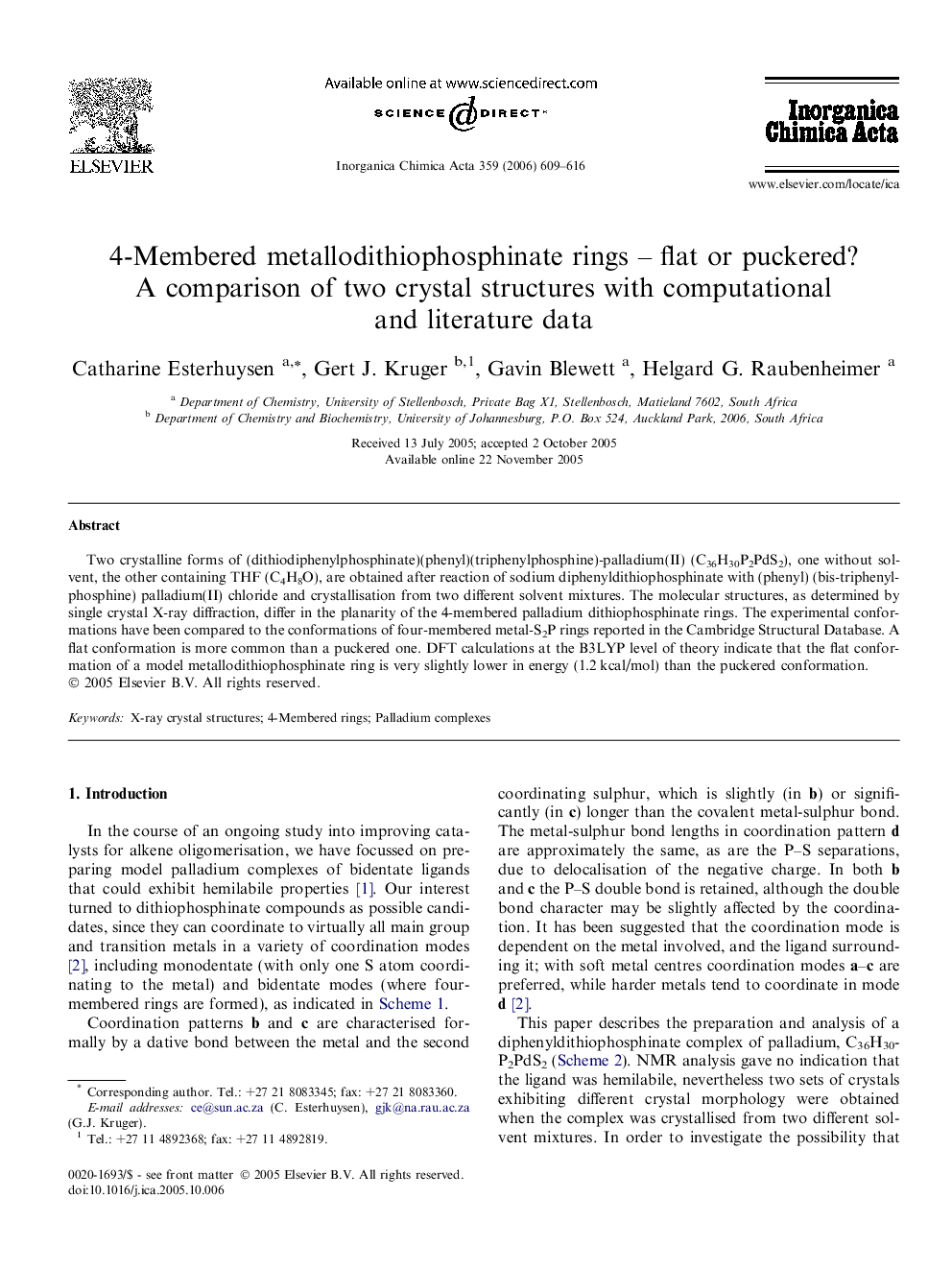| Article ID | Journal | Published Year | Pages | File Type |
|---|---|---|---|---|
| 1311777 | Inorganica Chimica Acta | 2006 | 8 Pages |
Two crystalline forms of (dithiodiphenylphosphinate)(phenyl)(triphenylphosphine)-palladium(II) (C36H30P2PdS2), one without solvent, the other containing THF (C4H8O), are obtained after reaction of sodium diphenyldithiophosphinate with (phenyl) (bis-triphenylphosphine) palladium(II) chloride and crystallisation from two different solvent mixtures. The molecular structures, as determined by single crystal X-ray diffraction, differ in the planarity of the 4-membered palladium dithiophosphinate rings. The experimental conformations have been compared to the conformations of four-membered metal-S2P rings reported in the Cambridge Structural Database. A flat conformation is more common than a puckered one. DFT calculations at the B3LYP level of theory indicate that the flat conformation of a model metallodithiophosphinate ring is very slightly lower in energy (1.2 kcal/mol) than the puckered conformation.
Graphical abstractTwo crystalline forms of (diphenylphosphinodithiolato)(phenyl)(triphenylphosphine)-palladium(II) (C36H30P2PdS2), one without solvent, the other containing THF (C4H8O), differ in the planarity of the 4-membered palladium dithiophosphinate rings. Comparison of the experimental conformations to the conformations of four-membered metal–S2P rings reported in the Cambridge Structural Database and to the results of DFT calculations shows that a flat conformation is more common than a puckered one.Figure optionsDownload full-size imageDownload as PowerPoint slide
